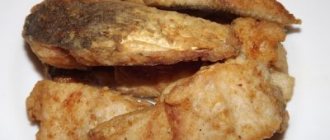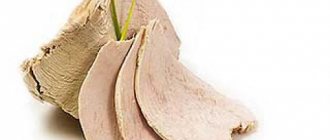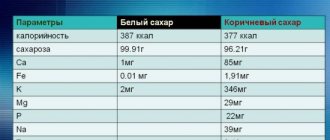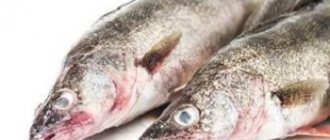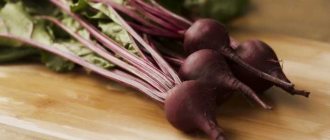Decapod crustaceans with a short abdomen are one of the favorite sea delicacies of our time. The population does not quite understand how to cut and eat crab in public, but thoughts of a luxurious restaurant dinner with this particular seafood appear constantly.
Crab meat is indeed very soft, tender and is considered a delicacy. The process of extracting meat from 5 pairs of legs and a massive shell is not so exciting. Only a few minutes of labor-intensive manipulation will bring the happy client closer to that very amazing sea taste.
But what exactly is seafood, how to eat it correctly, and how can an exotic dish be dangerous?
Useful properties of crab
Freshwater and sea crabs differ somewhat in their set of microelements. It is believed that sea meat is more valuable for dietary nutrition, as it can be considered a source of iodine. In dry figures, the calorie content of fresh crab meat is 73 kcal. After boiling (regular boiling in water or steaming or grilling without additional high-calorie fat), crab meat provides the body with 91 kcal. The product is considered dietary. Obviously serves as a source of protein. Carbohydrates in crab meat range from 1 to 3 g, and fat is also minimal.
The beneficial properties of crab meat are due to its chemical composition. Proteins are a source of essential amino acids, “building materials” for the cells of our body. Protein deficiency is a very harmful condition for humans. We cannot synthesize some amino acids on our own, which affects both the state of the immune system and the speed of metabolic processes. Many scientists link constant hunger, snacking and obesity to a protein-deficient diet. An adult needs 1 to 2 g of protein per kilogram of weight daily. Crab meat is considered a good bioavailable source of this macronutrient. Unlike, for example, plant proteins, it is well absorbed.
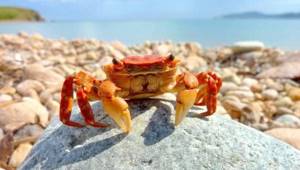
The percentage of essential amino acids to regular amino acids in this meat is very high, and distinguishes crabs from most fish and crustaceans. If plant proteins predominate in the diet, it makes sense to include seafood in it too, in order to satisfy the body’s need for “building material”.
The meat of most edible crabs contains carbohydrates - this is ordinary glycogen. Due to the sweet taste and the constant discussion of the glycemic index of food and its effect on body fat, many people do not eat crabs. Meanwhile, 3 grams of carbs in an easily accessible form, as long as you get most of your calories from protein, won't kill you. Proponents of the glycemic index theory should know that it decreases in foods if protein and fiber are added to them. By this logic, those losing weight should eat crab meat with vegetables, and everything will be fine.
Classical dietetics, on the contrary, recommends crabs as one of the low-calorie foods. In addition to protein, meat contains B vitamins, as well as antioxidants - vitamins A and E, iodine, iron, magnesium and sulfur. And this already contributes not only to satiety, but also to improved health. Sources on nutrition mention that crab meat is useful for metabolic disorders, disruptions in the nervous system, decreased levels of thyroid hormone secretion, and chronic fatigue syndrome.
Crab meat promotes skin renewal and rejuvenation due to vitamins A and E, and is useful for people with visual impairments. It is believed that it can also serve as an additional source of vitamin E for those who strive for a speedy recovery after operations and other interventions that violate the integrity of the skin.
Crab meat is recommended to be included in the diet of patients with cardiovascular diseases. The minerals in the product, as well as vitamins A and E, help restore the heart muscle after exercise. Crabs are called one of the food products that “fight” cholesterol, or more precisely, its deposits on the walls of blood vessels.
Crab meat is also recommended for consumption when metabolism is slow due to hypothyroidism, as well as for those who have problems due to iron deficiency.
Chemical composition
Nutritional value (per 100 grams of raw Kamchatka crab)
| Calorie content | 96 kcal |
| Squirrels | 18.2 g |
| Fats | 1 g |
| Carbohydrates | 0 g |
| Alimentary fiber | 0 g |
| Water | 78.9 g |
| Ash | 1.9 g |
Vitamin composition (in milligrams per 100 grams of raw Kamchatka crab)
| Retinol (A) | 0,03 |
| Thiamine (B1) | 0,05 |
| Riboflavin (B2) | 0,08 |
| Niacin (B3) | 2,5 |
| Pantothenic acid (B5) | 0,6 |
| Pyridoxine (B6) | 0,35 |
| Folic acid (B9) | 0,02 |
| Cobalamin (B12) | 0,001 |
| Ascorbic acid (C) | 1 |
| Tocopherol (E) | 1,5 |
| Nicotinic acid (PP) | 3 |
Balance of micro- and macroelements (in milligrams per 100 grams of raw Kamchatka crab)
| Potassium (K) | 310 |
| Calcium (Ca) | 100 |
| Magnesium (Mg) | 50 |
| Sodium (Na) | 250 |
| Sulfur (S) | 182 |
| Phosphorus (P) | 260 |
| Iron (Fe) | 4,3 |
Kamchatka crab

Kamchatka crab meat is the “sweetest”, it contains up to 3 g of glycogen per 100 g. Otherwise, its beneficial properties completely copy everything said for other crustaceans.
Kamchatka crabs are used not only for preparing canned food and frozen products. Their shells are a valuable source of chitosan.
Today there are many offers of dietary supplements with chitosan on the market; we are recommended to purchase them to “block fats.” Meanwhile, scientific research has proven the ineffectiveness of this approach. Chitosan from crabs or krill is not able to “block” branched lipid molecules in the human digestive tract. Therefore, “crab” tablets should not be considered an analogue of Xenical. Their consumers are destined to gain weight anyway if they overeat, despite the remedy.
Dietary supplements with chitosan are useful only as an additional source of fiber, and a good way to somewhat speed up the process of evacuation of the food bolus from the intestines. They are good for people who are deficient in plant fiber and for some reason are unable to replenish it in the usual way.
On the Internet you can also find folk recipes for replenishing iodine and vitamin A deficiency using Kamchatka crab shell. For those interested, the crabs are boiled, cleaned, their shells are crushed and used as a kind of “filler” for regular or olive oil. The product is then drunk, well, at least without pieces of shells. In fact, no research has been conducted on how much vitamin A remains in the oil or how much of it is contained in the product after cooking. Naturally, all this suggests the ineffectiveness of using such recipes.
How to choose a crab
The correct answer to the question about how to choose a crab begins not with “how”, but with “where”. If you purchase fresh crabs from a fish market, you need to make sure that the product is kept on crushed ice during storage. By the way, it cannot be more than 30 hours. Therefore, purchasing crabs on the regular market is quite problematic. Expensive crustaceans in large supermarkets are transported alive and then placed on ice before being sold. You only need to choose live crabs. The meat of the dead, like the meat of crayfish, can become toxic and cause poisoning.
Canned crab is selected based on the presence/absence of sodium benzoate and potassium sorbate. The presence of these two popular preservatives in the food industry indicates the not entirely natural nature of the product and possible fluid retention in the body. Benzoates and sorbates themselves are allowed for human consumption; they simply overload the excretory system, therefore, a product saturated with them cannot be considered useful.
Crab sticks are a fish product containing white meat from ocean fish. None of this has anything to do with crabs. You should only buy sticks that contain surimi, white fish meat, egg whites and natural dyes - carotenoids. Anything else cannot be considered a healthy food product.
In most non-seaside cities, we can quite safely purchase boiled-frozen crab claws (limbs). These are semi-finished products similar to the well-known frozen shrimp. The product is first cooked fresh, and then only frozen and sold. In fact, this is the best option if you don't live in a seaside town and can't get fresh crab.
General characteristics of seafood
Crabs are an infraorder of decapod crustaceans. An acceptable name is short-tailed crayfish. Crabs are among the oldest creatures, with known fossils dating back to the Jurassic period. It is clear that these fossils are the distant ancestors of modern crustaceans, which are called primitive crabs.
Content:
- General characteristics of seafood
- Beneficial features
- Chemical composition
- How to eat seafood correctly
- Use of the ingredient in cooking
- Contraindications for use
The head of the arthropod is small and flattened. The abdomen is short, symmetrical, protects the internal cavity of the crab and bends behind the jaw-thorax. Animals differ by gender. The abdominal limbs of males are transformed into a copulatory organ, and of females - into special organs for bearing eggs.
Crabs live both in the seas or fresh water bodies, and on land. Today, about 4 thousand species of arthropods are known. Most of them are used in the food industry. The size of the animal depends on the specific variety. For example, on the shores of Japan live giant crabs Macrocheira kaempferi, which weigh about 20 kilograms, and the size of their limbs reaches 4 meters.
Crabs make up 20% of all marine crustaceans that are caught, farmed and sold. About 1.5 million tons of arthropods are used annually in the food industry.
All crabs, except freshwater ones, reproduce in water. The metamorphic development of an animal looks something like this: the emergence of a pelagic larva from eggs (zoea), then transformation into a full-fledged larva (megaola), after which transformation into an adult arthropod. Freshwater crabs skip the larval stage.
Arthropods are capable of independently breaking off their limbs. This technique is most often used when a crab is being chased by a predator. In place of broken limbs, new, absolutely healthy organs grow, which quickly begin to function.
How to clean and cook crab
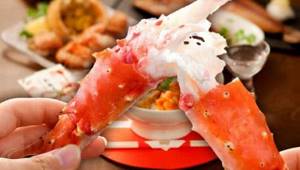
Crabs are cooked much like crayfish. First, they are “soaked” alive in water, then boiled until the chitinous cover turns red. After which, the product is served on the table in its entirety. The crabs are cleaned by breaking off the limbs and abdomen using special devices - two-pronged forks. The shell is split open, the meat is removed and eaten with olive oil and lemon juice.
Boiled-frozen limbs are boiled directly in the form in which they are sold for 3-5 minutes in boiling water.
And then various “housewife secrets” begin. Some boil crabs in milk, others in plain water with the addition of 1 tablespoon of olive oil and the juice of 1 lemon to make the shells shine, and so on. All this is great, but in no way improves the taste of the product. Crab is one of the types of meat that is prepared in the “the simpler the better” style.
Gourmets, by the way, don’t really approve of our favorite crab salads and soups with crab meat. It is believed that the product is good simply boiled with a drop of lemon juice and olive oil and even without any side dishes.
Video on the topic:
How to eat seafood correctly
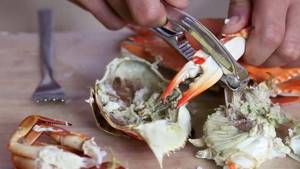
If the meal is at home, then lay thick paper, another tablecloth, or even a few newspaper pages on the table. Cutting a crab will bring real chaos to your home in the form of mess, juice and pieces of crustacean flesh. Take care of yourself in advance and reduce your cleaning time.
In a fish restaurant, you are served with a special hammer for the crab, tongs for splitting the claws, a dull knife and a special oblong device with a point at the end. Anything will work for a home meal: any knives, forks, and even a device for cracking nuts.
As soon as a toasted representative of the deep sea appears on the plate in front of you, proceed to active actions. Using rotating movements, tear the legs and claws away from the body. If you don’t want to tear off the legs with your hands (or you don’t have the strength), then use a dull knife. The knife is inserted into the junction point between the base of the claw/leg and the body of the crustacean. Lightly press on this point and the leg will literally fall off on its own. Remove the meat from the legs using an oblong, pointed tool. The claws must be crushed, cleaned, and the remaining meat must be removed using utensils.
Turn the crab onto its back, belly up. Separate the chest section from the shell (it can be easily removed from the base of the carcass when the claws and legs are separated). Take the opened upper part of the shell in your hands and break it in half. Remove inedible green/brown compounds from the meat and enjoy your meal.
What to pay attention to when cutting seafood
- Cartilage. Each claw contains dense cartilage. There is no need to eat it (and you won’t be able to), so cut the claws carefully and thoroughly to avoid inedible elements.
- Spikes. The crustacean's shell is covered with small spines, which, when pressed hard, can cause pain. Be careful and make the most of your available tools.
- Small dense elements. The crab's body is filled with small bones, cartilage and various compounds that are unsuitable for consumption. They can damage the mucous membrane or simply get stuck in the esophagus. Be careful and double check the meat you are about to put into your mouth.
Culinary recipes with crab
Seafood soup
Frozen crab claws, 300 g, boiled frozen shrimp fillet, 200 g, white onion, nori seaweed, funchose 30 g, and spicy Japanese vinegar.
Boil the claws separately and peel them, cook the broth from the shrimp and onions, add nori, cook for no more than 5 minutes, throw in the funchose, and leave on the fire for another 10 minutes. At the end of cooking, add the peeled crab claws (meat only). Serve with a mixture of vinegar and soy sauce.
Blood orange salad
200g peeled crab meat, 200g sweet blood oranges, arugula, half an avocado and half a lemon.
Boil the crab claws, remove the meat, leave it in large pieces to decorate the salad. Cut the orange into small cubes and remove the seeds. Tear the arugula with your hands. Mix orange, crab and arugula in a salad bowl. Leave. Grind the avocado and lemon (remove the pits and seeds first) in a powerful blender. Pour the sauce over the salad and refrigerate for half an hour before serving.
Stuffed egg with crab and caviar (appetizer)
12 boiled large chicken eggs, 100 g of crab meat, 100 g of flying fish caviar or any other small caviar, fresh or lightly salted, 1 cucumber, a little mustard powder, sea salt, half an avocado or a tablespoon of olive oil.
Cool the eggs, remove the yolks into a separate bowl. Boil the crab meat and cool. Grate the cucumber. Grind the mashed yolks along with avocado and sea salt in a blender, mix with grated cucumber, and grind again. Add caviar to the pasta and stuff the whites with the mixture. The remaining mixture can be used as sandwich paste. The appetizer can be served separately or on rye bread.
Crab harm

Dead crab meat is toxic. It can cause severe poisoning, which can result in loss of vision and hearing. Therefore, if you do not trust sources in your city too much, it makes sense to choose canned food.
Crab meat can cause allergies; usually people who have a reaction to shrimp or sea fish protein experience it. Therefore, it is better to do laboratory tests for allergies before introducing any new foods into your diet.
In addition, crabs may be affected by a bacterial infection, and also not suitable for food.
Contraindications
When considering the benefits and harms of crab meat, one cannot fail to mention contraindications. They are minimal - namely, individual intolerance, a tendency to allergies. If fish protein intolerance was previously noted, with a high degree of probability it will appear with this delicacy. It is important to choose a high-quality product and prepare it correctly - crabs live at the bottom of the sea along with microbes and bacteria, so without heat treatment their meat can be hazardous to health. Arthropods must swim in environmentally neutral zones.
